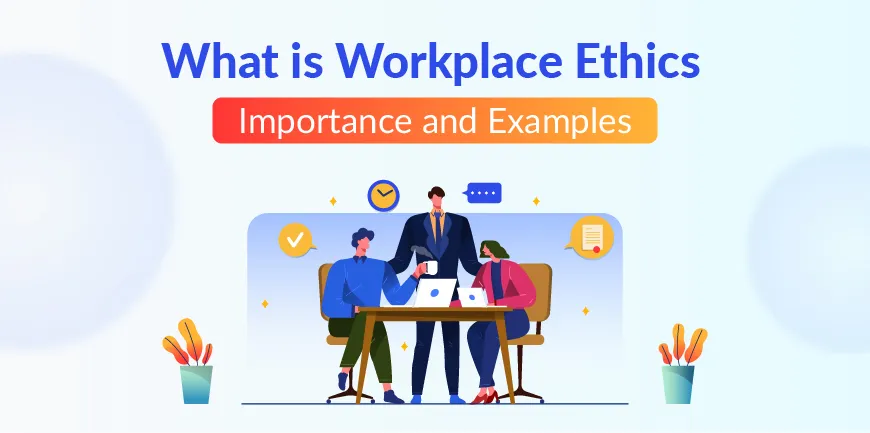
What is CRM? Definition, Types and Benefits
27/06/2023
Upskilling for Internal Mobility – How It Transforms the Workplace
30/06/2023The world is moving at a rapid pace and every few years we have a new industrial revolution, starting with the first spanning the years from 1760 to 1840. Who would have dropped the words Industry 5.0, metaverse, 6G, edge computing or AI in the 18th century? Who could have imagined that we would be here? We are converging to a point where all the advancements we have made in science and technology are going to move the needle to a more interconnected yet greener world.
Moving forward from big data and AI-enabled solutions in Industry 4.0 to a more human-with-machine approach in Industry 5.0 is going to be challenging, especially while meeting the requirements of sustainability in the entire chain of activities. The metaverse is another vital piece of the puzzle we need to put together to usher in the next age and before we do that, we must decide how best we can use the power of 6G.
What is Metaverse?
The term metaverse – is derived from ‘meta’ meaning ‘beyond’ and ‘universe’ to imply a virtual world beyond our world but connected to it. It was first described in the science fiction novel Snow Crash by Neal Stephenson. The metaverse is ‘the new social’ envisioned by Meta.
It provides a way for users to interact with each other through VR, AR and related technologies. Extending this to the workspace, virtual offices can be set up in the metaverse and employees could set up their own cubicles. Each cubicle could be branded by the employer or set up as the employee chooses, should the employer allow it.
Basically, the metaverse is an extension of the corporate office to the virtual world and we expect the environment and the work culture to follow that of the actual brand and office.
The metaverse is only a concept right now, because it requires networking that is about 100 times faster than what most people generally have. With the advent of 5G, metaverse-like possibilities have already unfolded.
Yes, we are talking about AR and VR, and Apple’s foray into XR (extended reality) is very encouraging for the metaverse too. But with the advent of 6G, which is about hundred times faster than 5G, we will have achieved much greater speed and much lower latency levels, which are essential for the metaverse to function.
The commitment towards Industry 5.0 and the impact of Edge AI will further ensure that the metaverse is functional even with poor radio networking. A lot of the computation will be moved from the remote server to the edge device (mostly a mobile device) to ensure that the user experience is uninterrupted, natural and most importantly, believable.
What are the Benefits of 6G-enabled Edge AI for the Metaverse?
Intelligence: Edge AI, as the name suggests, is intelligence at the edge. Unlike a regular application at the edge, which addresses a particular problem, AI can address a particular ‘type of problem’. This enables it to process the diverse inputs that occur at the edge, including a lot of very high-bit rate video, text, and images.
To receive such a volume of data, 6G needs to be made available. To make interactions between real and virtual worlds possible in the metaverse in real-time, it is necessary to have such intelligence at the edge.
Real-time insights: Data analysis happens locally at the edge with the AI, which means that there is no need to send the data to the cloud. This allows the system to gain interpret the data in real-time. 6G can easily adapt to any connectivity losses very quickly, making this possible. Deriving such real-time insights can be crucial in ensuring the safety and privacy of every individual.
Reduced time: Lesser data needs to be moved back into the cloud and a lot of the data can be processed at the edge itself, reducing the time taken for processing considerably. And when data needs to be sent to the remote server, it can happen very quickly, thanks to 6G. The faster such data processing happens, the more seamless the experience will be in the metaverse.
Prevent data sharing and breaches: AI analyzes all the real-world data at the edge, to maintain the privacy of the individual. Even if data needs to be sent to the cloud server, then only parts of it need be sent (which 6G can distinguish between easily), allowing to maintain the anonymity of the user.
Users will care about their privacy in the metaverse. By holding personal data in a decentralized manner, possibly on a blockchain, no single entity will have access to all the data. This will help prevent breaches seeking to wipe user data or gain access to it.
Increased reliability over time: With time, the AI gets smarter and smarter. This is because when the edge AI encounters a case or problem where it needs help, then it will upload this data to the cloud server, which will then respond with a way to train the AI to solve the problem.
This process also happens very fast, thanks to 6G and is more reliable too. The human-machine interface will develop over time, and AI will need to get smarter, which it will, thanks to the speed and reliability of 6G. This will ensure that the experience in the metaverse too improves with time.
The advancements in 6G and edge computing will probably drive the car all the way to the finish line for us with employees in virtual workspaces in the metaverse, paving the way forward for businesses to become more cost-effective, bringing faster and more immersive virtual gaming worlds, and making consumers feel more cared for, thanks to hyper-personalized content. But are there any challenges to the metaverse?
What are the Challenges to the Metaverse?
In keeping with the principles of Industry 5.0, the metaverse will allow a human-with-machine approach to build believable human AI worlds that are made complete and remain uninterrupted, thanks to the much higher speed and reliability and low latency of 6G and the intelligence at the edge. The 6G network will also have ten times the machine-to-machine connectivity that 5G currently offers, bringing the 10 million connected devices per sq. km target within reach and making loT possible on a large scale.
But there is a challenge when moving to 6G. 6G networks will use even higher bandwidths to transfer data, but currently it is expected to use a lot more energy. In keeping with the requirements of Industry 5.0, the 6G network will need to be much more energy efficient than it is expected to be.
This is going to be a unique challenge, from our point of view, as these technologies intersect in the perceivable future.
Another challenge to the metaverse is the VR tech itself, with VR headsets that are clunky and difficult to use. Many people have experienced motion sickness and dizziness when using these headsets. There will need to be an alternative to the headsets in the market now. It must become a lot smaller and manageable.
Lastly, another hurdle is the low level of trust that users, in our case, employees put in the metaverse. Would you work for a company in a virtual space?
This comes down to how the company conducts itself in the metaverse and the general rules governing workspaces and companies and environments in the metaverse. How safe really are these environments?
Closing words
There must be a lot of thought that goes into the governance in the metaverse. We must decide how ethical it is and what limits must be placed, with respect to the interaction between the users, and just how it can tackle the problems people may face in an office convincingly enough to be truly recommended.
To add to this, it must be enabled to its fullest potential by 6G and edge. Clunky interfaces to connect to it must also be removed before it can work well. Until that happens, there will be very few takers for the metaverse, despite its great potential.
Contact Us For Business Enquiry

Rajkumar Shanmugam
Rajkumar Shanmugam is the Head of HR at ALP Consulting, bringing over 19 years of comprehensive HR leadership experience across India and international markets. His expertise spans talent acquisition, employee relations, performance management, compliance, and HR transformation. Rajkumar has a proven track record of driving people-centric initiatives, enhancing workplace culture, and aligning HR strategy with business goals. With extensive experience in US staffing operations and global mobility, he continues to lead organizational excellence through innovation and employee engagement.




